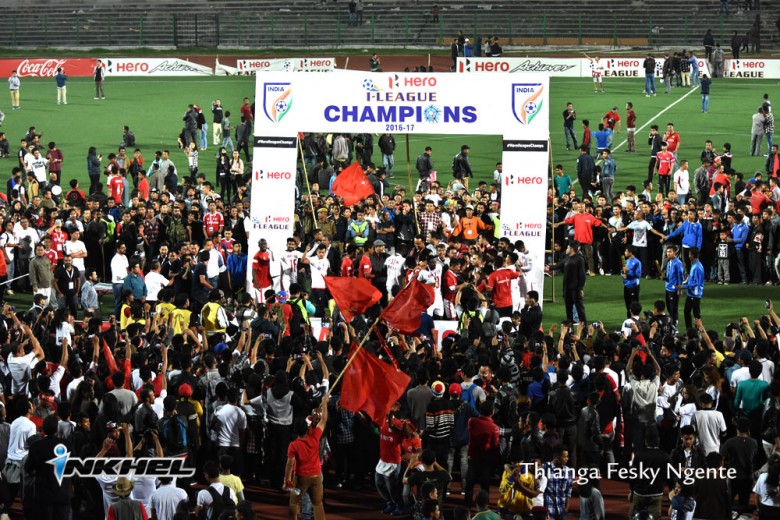As it continues to sink in that Aizawl FC are the new champions of the I-League, fans who have come to Shillong to be a part of the historic moment are slowly making their way back to Mizoram and other cities across India with pride and joy, content with the knowledge of the achievement of the club from their land.
It is only befitting that a state which is so passionate about football should have the trophy in its hearth, acting as a constant reminder for its people that the sky really is the limit if they work as hard for anything as they have for football.
For a people with an obscure history that relies heavily on oral traditions for its reconstruction, recognition at the national level in our great land of “unity in diversity” cannot be just a football thing; it is a matter of pride, a way of reasserting their worth and capabilities.

A close knit community, the Mizos had traditional institutions called “Zawlbuk” which served as dormitories for young men past adolescence. There, they were taught everything they needed to know about life in their beautiful hills even before they were introduced to modern education. They learnt as a group and performed almost all activities as a group which, perhaps, is one of the reasons why the Mizos are so zealous about the game where teamwork is one of the most important aspects.
News of Mizoram or the Mizo people are rarely heard or seen in the national media, and even the ones that do would often have the capital city of Mizoram, Aizawl spelt incorrectly. Hopefully that will change now that a club based in the city has been crowned champion. Even if one cannot take the trouble to check the correct spelling of a capital city in faraway Northeast India, surely one can spare a few extra seconds to check the spelling of a football club that has thwarted clubs from other cities that are easier to spell.
For several reasons that could be understood only by the Mizos themselves, or people from their sister states in Northeast India, or anybody who has ever shown sincere interest in the people from the region, football cannot be looked at as just a sport or as a source of entertainment. It has become and has to be a narrative of the Mizo people now that the club has helped garner interest in Mizoram.
Mizoram failed to capture the attention of mainstream media in 1966 and the following twenty years when she fought for independence from India, during which the people suffered all kinds of misery and torture. Though Mizoram attained full-fledged statehood in 1987, it remains obscure to the rest of India even today just as its own history was obscure. Apart from being distanced from mainland India geographically, religious, cultural and linguistic disparities have contributed to a feeling of isolation among the Mizos.
With no proper platform to validate their identity, their ethnicity and their culture in the national scene for a long time, when a Mizo shouts AIZAWL FC or sings the state song RO MIN REL SAK ANG CHE at the top of his or her voice during a match, it is not just for the football club, but for Mizoram, for the Mizo people, for the Mizo culture…

Football, a game loved dearly by the Mizos has not just entertained them or given them a sense of achievement this I-League season; it has given them a voice. It has reaffirmed the identity of the small minority community that has been sidelined for far too long though they have been standing in attention singing the national anthem since 1950.
The more than 2500 fans travelling home with cherished memories will not just tell their children and their grandchildren that they saw Aizawl FC lifting an erstwhile I-League trophy in person, but will add with pride that in 2017, they saw Mizoram being celebrated all over the nation because of the game they love, football.
